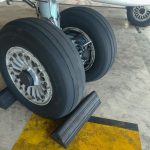Introduction
Overview of the problem
Overview of the problem: Hospitals are busy places with a constant flow of people, including patients, visitors, and staff. With so much activity, accidents can happen, and one of the most common types of accidents is slips, trips, and falls. These accidents can result in serious injuries, which can be particularly problematic in a hospital setting where patients are already vulnerable. To prevent these accidents, hospitals need to take proactive measures, such as installing heavy-duty speed bumps in key areas.
Importance of preventing accidents in hospitals
Hospitals are places where people go to receive medical care and treatment. However, they can also be dangerous places where accidents can occur. Patients, visitors, and staff are all at risk of slips, trips, and falls, which can result in serious injuries. In addition, medical equipment, such as IV poles and oxygen tanks, can pose a hazard if they are not properly secured. Therefore, it is crucial to take measures to prevent accidents in hospitals. Installing heavy-duty speed bumps in key areas can help reduce the risk of accidents by slowing down traffic and encouraging people to be more cautious.
Purpose of the article
The purpose of this article is to highlight the importance of heavy-duty speed bumps in hospitals and how they can help prevent accidents. Hospitals are busy places with a constant flow of traffic, including emergency vehicles, patients, visitors, and staff. With so much activity, it’s crucial to have effective safety measures in place to reduce the risk of accidents. Heavy-duty speed bumps are an excellent solution as they force drivers to slow down, making it safer for pedestrians to cross the road and reducing the risk of collisions. This article will explore the benefits of heavy-duty speed bumps in hospitals and how they can contribute to a safer environment for everyone.
Types of speed bumps
Traditional speed bumps
Traditional speed bumps are commonly used in parking lots and on roads to slow down vehicles and prevent accidents. However, in hospitals, these speed bumps can pose a problem for emergency vehicles and patients with mobility issues. The height and angle of traditional speed bumps can cause discomfort and pain for patients who are already dealing with medical issues. Additionally, emergency vehicles may need to navigate around these speed bumps quickly, which can delay response times and potentially harm patients in critical condition. As a result, hospitals are turning to heavy-duty speed bumps that are specifically designed for their unique needs.
Heavy duty speed bumps
Heavy duty speed bumps are an effective solution for controlling the speed of vehicles in hospital parking lots and driveways. These speed bumps are designed to withstand the weight of heavy vehicles and provide a noticeable jolt to drivers who are traveling too fast. By slowing down drivers, heavy duty speed bumps can help prevent accidents and improve safety for pedestrians and other vehicles. Additionally, these speed bumps are durable and require minimal maintenance, making them a cost-effective solution for hospitals looking to improve their traffic safety.
Comparison of the two types
When it comes to choosing between standard speed bumps and heavy-duty speed bumps for hospitals, there are a few key differences to consider. Standard speed bumps are typically made of rubber or plastic and are designed to slow down traffic in parking lots or on private roads. Heavy-duty speed bumps, on the other hand, are made of durable materials like concrete or steel and are designed to withstand the weight of larger vehicles like ambulances and delivery trucks. While both types of speed bumps can be effective at reducing speeds and preventing accidents, heavy-duty speed bumps are often the better choice for hospitals due to their ability to withstand heavy traffic and provide a more permanent solution.
Benefits of heavy duty speed bumps in hospitals
Reduced speed of vehicles
One of the most significant benefits of heavy-duty speed bumps in hospitals is that they can significantly reduce the speed of vehicles. When drivers approach a speed bump, they are forced to slow down, which can help prevent accidents and collisions. This is particularly important in hospital settings, where there are often vulnerable patients, staff, and visitors walking around. By slowing down vehicles, speed bumps can help create a safer environment for everyone in the hospital, reducing the risk of accidents and injuries. Additionally, slower speeds can also help reduce noise levels, which can be beneficial for patients who need a quiet and peaceful environment to recover.
Increased safety for patients and staff
Heavy duty speed bumps can significantly increase safety for patients and staff in hospitals. By slowing down vehicles, speed bumps reduce the risk of accidents and collisions in areas where pedestrians are present. This is particularly important in hospitals where patients may be vulnerable and staff are often rushing to attend to urgent matters. In addition, speed bumps can help prevent damage to hospital property, such as walls and equipment, which can be costly to repair. Overall, the installation of heavy duty speed bumps can provide a simple yet effective solution to enhance safety and prevent accidents in hospitals.
Prevention of accidents
Prevention of accidents is crucial in hospitals as they are places where people come to seek medical treatment and care. Heavy duty speed bumps can play a significant role in preventing accidents in hospitals. These speed bumps are designed to slow down vehicles and prevent them from speeding in areas where pedestrians are likely to be present. By installing heavy duty speed bumps in hospital parking lots and driveways, hospital administrators can ensure the safety of patients, visitors, and staff. This measure can also help prevent accidents involving emergency vehicles, which need to move quickly but safely through hospital premises. Overall, heavy duty speed bumps are an effective way to prevent accidents and promote safety in hospitals.
Lowered liability risks
Lowered liability risks are another significant benefit of heavy-duty speed bumps in hospitals. By installing these speed bumps, hospitals can reduce the chances of accidents and injuries caused by speeding vehicles. This, in turn, can help hospitals avoid costly lawsuits and legal liabilities. Moreover, it can also improve the hospital’s reputation and increase patient satisfaction, as patients and visitors will feel safer and more secure while navigating the hospital’s premises. Therefore, investing in heavy-duty speed bumps is a wise decision for hospitals looking to mitigate risks and improve their overall safety standards.
Installation and maintenance of heavy duty speed bumps
Proper installation process
Proper installation of heavy-duty speed bumps is crucial to ensure their effectiveness in preventing accidents in hospitals. The installation process should be carried out by professionals who have experience in installing speed bumps. The first step is to identify the areas where speed bumps are needed and mark them accordingly. The surface should be cleaned and leveled before the speed bumps are installed. It is important to ensure that the speed bumps are installed at the right height and angle to avoid causing discomfort to patients and staff. Additionally, proper signage should be placed to alert drivers of the presence of speed bumps. Regular maintenance and inspection of the speed bumps should also be carried out to ensure they are in good condition and functioning as intended.
Maintenance requirements
Maintenance requirements for heavy duty speed bumps in hospitals are minimal. However, it is important to regularly inspect them for any signs of damage or wear and tear. Any cracks or holes should be repaired immediately to ensure the safety of patients, staff, and visitors. Additionally, regular cleaning of the speed bumps is necessary to prevent the buildup of debris or dirt that could make them less visible. By properly maintaining heavy duty speed bumps, hospitals can ensure that they continue to effectively prevent accidents and promote a safe environment for everyone.
Cost considerations
Cost considerations are an important factor when it comes to installing heavy-duty speed bumps in hospitals. However, the cost of installing speed bumps is relatively low compared to the potential costs of accidents and injuries that can occur in hospital settings. In fact, the cost of installing speed bumps is often outweighed by the benefits of preventing accidents and injuries. Additionally, heavy-duty speed bumps are durable and require minimal maintenance, making them a cost-effective solution in the long run. Hospitals can also consider using recycled rubber speed bumps, which are not only cost-effective but also environmentally friendly. Overall, the cost of installing heavy-duty speed bumps is a small price to pay for the safety and well-being of hospital staff, patients, and visitors.
Conclusion
Summary of key points
In summary, heavy duty speed bumps can play a crucial role in preventing accidents in hospitals. They can help to slow down vehicles and reduce the risk of collisions, particularly in areas where pedestrians are present. By installing these speed bumps in strategic locations, hospitals can create a safer environment for patients, visitors, and staff. Additionally, heavy duty speed bumps are designed to withstand the weight of large vehicles, making them a durable and long-lasting solution for hospitals that require heavy traffic flow. Overall, investing in heavy duty speed bumps can be a simple yet effective way for hospitals to improve safety and prevent accidents.
Call to action for hospitals to consider heavy duty speed bumps
In conclusion, hospitals have a responsibility to ensure the safety of their patients, staff, and visitors. Installing heavy duty speed bumps in high-risk areas can significantly reduce the risk of accidents and injuries caused by speeding vehicles. It is crucial for hospitals to prioritize safety measures and take action to prevent accidents. By investing in heavy duty speed bumps, hospitals can create a safer environment for everyone and demonstrate their commitment to providing quality care. Therefore, we urge all hospitals to consider implementing heavy duty speed bumps as part of their safety protocols.
Final thoughts
In conclusion, heavy duty speed bumps can play a crucial role in preventing accidents in hospitals. By slowing down vehicles and ensuring that drivers are more cautious, these speed bumps can help reduce the risk of collisions and other incidents that could put patients, staff, and visitors in harm’s way. While there are other measures that hospitals can take to improve safety, such as training staff and implementing stricter poli








